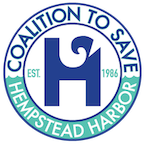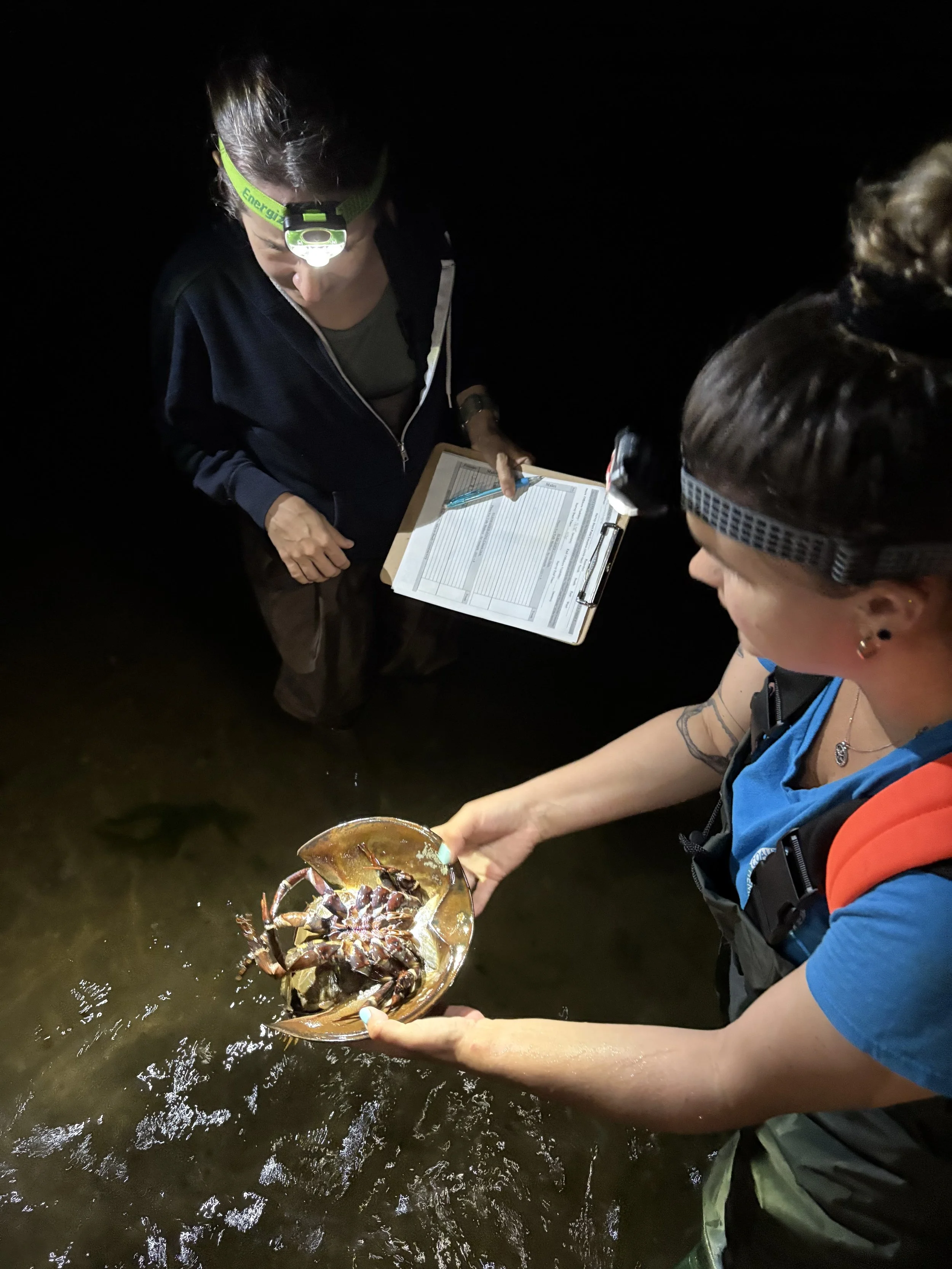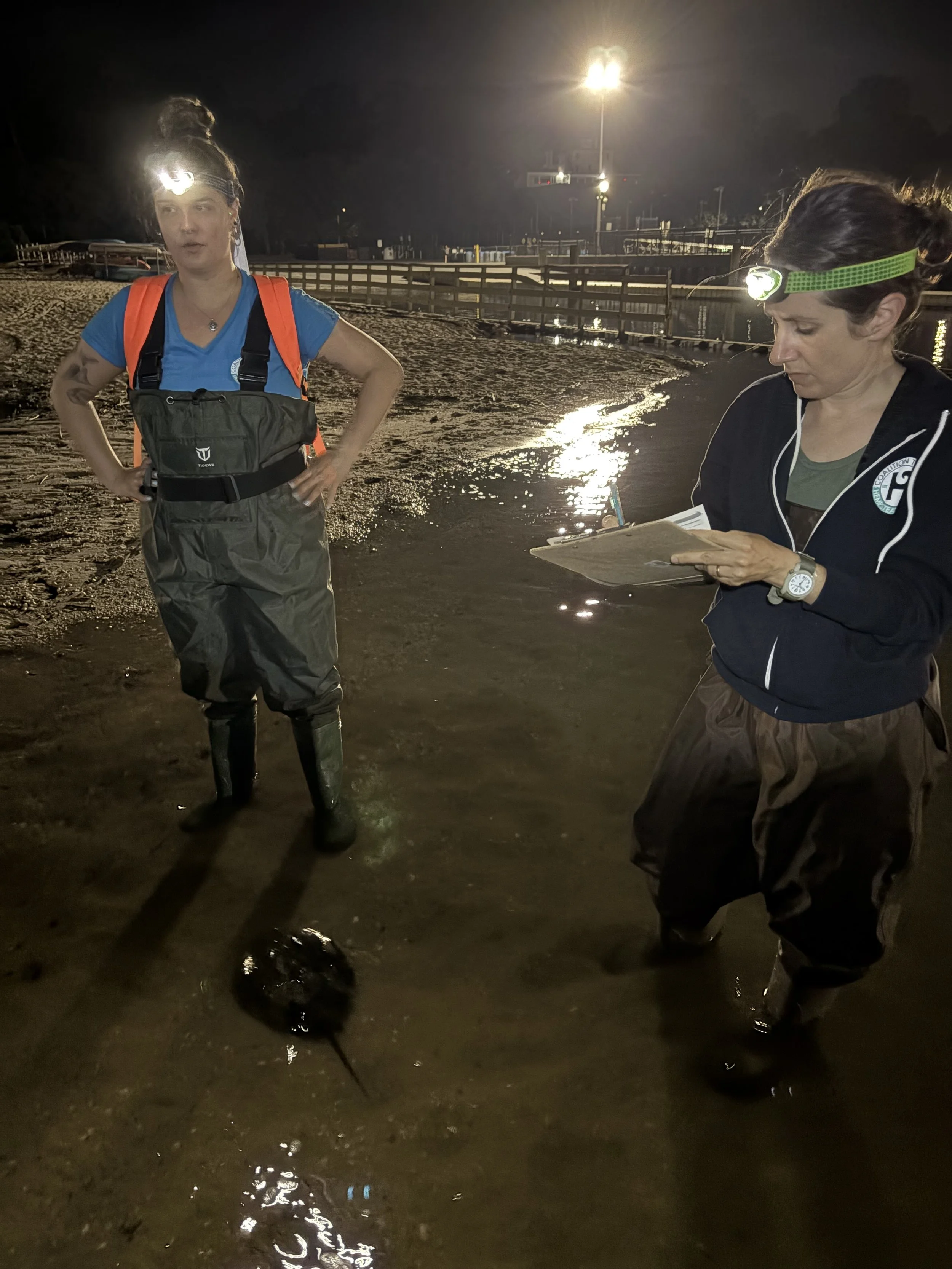Cycle 4 — 2025
This was the last of the monitoring cycles. There was the pattern of very few horseshoe crabs moving toward the shoreline. During each of the two monitoring surveys conducted, only two horseshoe crabs were counted.
CSHH Horseshoe Crab Monitoring Outcomes:
Night 1: The first night of the third cycle, two nights before the new moon. We counted two horseshoe crabs, one of which was dead and had been harvested, the other was live and had a nub for a tail. We also put out our last tag of the season, bringing the total number of tags put out in Hempstead Harbor to 75.
Horseshoe crabs have a telson, or tail; without it, they likely will not survive. Horseshoe crabs use their tails to flip themselves over if they get turned upside down, usually from waves near the shoreline. A horseshoe crab can right itself by bending at its mid-body hinge and using its tail to push off the sand.
Telsons also have receptors down the entire length, which helps horseshoe crabs establish their circadian rhythm (cycles of day and night). Contrary to what some may think, horseshoe crabs cannot sting you and they do not use their tail for defensive purposes.
The muscle holding the tail in place is very sensitive, so horseshoe crabs should never be picked up by their tails. Generally, horseshoe crabs should not be handled. However, if you encounter a horseshoe crab that needs help, grab by the sides of its shell and lift gently, then place it downslope toward the water, being cautious not to harm the tail.
Above: CSHH staff educating about horseshoe crab anatomy and taking environmental data (photos by Kate Bernhard, 6/23/25)
Night 2: The night of the new moon. We counted two horseshoe crabs, one of which was dead but not harvested. A black skimmer was skimming the water’s surface for food, and a black-crowned night heron was perched on the seawall near the boat ramp. We also noted a lot of seaweed in the water.
Black-crowned night heron (photo by Michelle Lapinel McAllister, 6/26/25)
Night 3: Two nights after the new moon. This monitoring night was cancelled.
Monitoring season recap:
Across all four monitoring cycles at Tappen Beach, we counted 2,058 horseshoe crabs, tagged 75 horseshoe crabs with US Fish & Wildlife tags, and observed nine horseshoe crabs that had been tagged previously (eight were tagged this season in Hempstead Harbor and one had been tagged approximately three years ago in another waterbody). The highest number of horseshoe crabs counted during a single night was 472, counted during the first full-moon cycle. A total of 27 volunteers participated in the horseshoe crab survey at Tappen Beach.
A tagged horseshoe crab making its way to the water (video by Kate Bernhard, 6/23/25)




